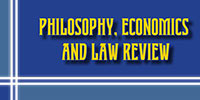Yurii PARSHYN
D.Sc. in Economics, Professor (Dnipropetrovsk State University of Internal Affairs), Ukraine
ORCID iD: orcid.org/0000-0002-8650-5303
parshin22@ukr.net
Margaryta PARSHYNA
Ph.D. (Economics), Associate Professor (University of Customs and Finance), Ukraine
ORCID iD: orcid.org/0000-0001-9256-1929
maggiednepr@ukr.net
Volodymyr YEFIMOV
Candidate of Juridical Sciences, Associate Professor (Dnipropetrovsk State University of Internal Affairs), Ukraine
ORCID iD: orcid.org/0000-0002-7094-3990
efimov2009@i.uа
UDC 338.32.053.4
DOI: 10.31733/2786-491X-2021-2-68-77
Keywords: examination, method, evaluation, classification, stages, experts
Abstract. Attention is paid to the fact that in order to make reasonable decisions, it is necessary to rely on the experience, knowledge and specialistsʼ intuition. A large number of methods for obtaining expert assessments, has been noted.
The methods of examination are also differ, in some of them work is being done separately with the expert, in others the problem is being discussed collectively, opinion of other experts is being studied, incorrect ways of decision are being rejected. It is also emphasized that there is diversity at all stages of the examination: formation of the group by number, qualifications of experts. Using of statistical data processing also differs significantly, from mathematical to computerized. The main methods and stages of expert evaluation have been given. Emphasis is being placed on assessments, their classification according to various criteria and characteristics. Conditions for measuring of qualitative and quantitative characteristics and the main requirements for them are being indicated. Attention is being paid to the conditions of using of the interval scale and the order scale. The methodology of expertsʼ work in case of definition of probabilistic expert estimations is being described. Peculiarities of using the methods which are most often used in practice have being described, among which are method of academician V. Glushkova, morphological method, QUEST, PATTERN, SEER methods and Delphi method. A combined method of examination at enterprises with specific working conditions is being proposed. The algorithm of examination has been developed and the main stages of examination, and functions of the persons which are taking part in examination have been olefined. The main requirements to the automated expert system have been highlighted.
References
- Arrow, K. (2004). Collective choice and individual values. Moscow: GUVSE, 204. (in Russian).
- Bammer, G., O’Rourke, M., & Richardson, G. (2020). Expertise in research integration and implementation for tackling complex problems: when is it needed, where can it be found and how can it be strengthened? Humanities and Social Sciences Communications, 6(5). https://www.nature.com/articles/s41599-019-0380-0.
- Beck, St. (2015). The Problem of Expertise. From Experience to Skilful Practices to Expertise. Ecological and Pragmatist Perspectives. European Journal of Pragmatism and American Philosophy, VII-1, https://journals.openedition.org/ejpap/346.
- Flyuverh, B. (2006). Strategic assessments. Economic policy, 1, 77-101. (in Ukrainian).
- Grundmann, R. (2017). The Problem of Expertise in Knowledge Societies. Minerva, 55(1), 25-48, https://www.ncbi.nlm.nih.gov/pmc/articles/PMC5306236/.
- Hmelo-Silver, C., & Pfeffer, M. (2004). Comparing expert and novice understanding of a complex system from the perspective of structures, behaviors, and functions. Cognitive Science, 28, 127-138, https://onlinelibrary.wiley.com/doi/pdf/10.1207/s15516709cog2801_7.
- MacMillan, J., & Entin, D. (1993). Evaluating Expertise in a Complex Domain-Measures Based on Theory. Proceedings of the Human Factors and Ergonomics Society Annual Meeting, https://www.semanticscholar.org/paper/Evaluating-Expertise-in-a-ComplexDomain%E2%80%93Measures-MacMillan-Entin/79cd3db0dc575a4e1665fb07866568097 61512cc.
- Methods and models of decision theory. https://sgv.in.ua/off-lifaq/30-metodi-i-modeli-teoriji-prijnyattya-rishen. (in Ukrainian).
- Mirkin, B. (1974). Group choice problem. Moscow: “Nauka”. (in Russian).
- Parshyn, Y., & Parshyna, O. (2020). Fundamentals of economic analysis. Dnipro: Drobiazko S.
- Parshyn, Y. (2014). Strategic decisions forming on steady development providing of national economy, http://global-national.in.ua/archive/2-2014/59.pdf.
- Parshyn, Y., & Parshyna, O. (2020). Analytical platform to provide competitiveness of ore-mining machinery manufacturing. Mining of Mineral Deposits, 14(3), 61-70.
- Reshetylo, V., & Fedotova, Yu. (2020). Uncertainty and Risk: the relationship between concepts and the specifics of decision making. Problems of systematic approach in economy, http:// psae-jrnl.nau.in.ua/journal/3_77_2_2020_ukr/23.pdf.
- Thomas, M., & Buckmaster, L. (2013). Expertise and public policy: a conceptual guide. Social Policy Section. Australian Parliament House is currently closed to the public, https://www.aph.gov.au/About_Parliament/Parliamentary_Departments/Parliamentary_Library/pubs/rp/rp1314/PublicPolicy#_Toc370116041.
- Voloshyn, O., & Mashchenko, S. (2010). Methods and models of decision theory, Kyiv: Kyiv University, http://cyb.univ.kiev.ua/library/books/voloshyn-20.pdf. (in Ukrainian).
